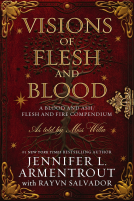
Killing Monarchs
Regicide in the Tudor and Stuart Age
by Richard Heath
This title was previously available on NetGalley and is now archived.
Send NetGalley books directly to your Kindle or Kindle app
1
To read on a Kindle or Kindle app, please add kindle@netgalley.com as an approved email address to receive files in your Amazon account. Click here for step-by-step instructions.
2
Also find your Kindle email address within your Amazon account, and enter it here.
Pub Date Sep 30 2025 | Archive Date Oct 02 2025
Pen & Sword | Pen & Sword History
Talking about this book? Use #KillingMonarchs #NetGalley. More hashtag tips!
Description
Rulers (and would-be rulers) have always faced the possibility of a violent death. Between the seventh and eighteenth centuries over 20% of all British and European monarchs suffered such a fate. Some died in battle or in accidents but most of them were murdered or executed.
During the time of the Tudors and Stuarts some monarchs were the victims of lone assassins, some were killed after palace coups led by relatives or royal officials, and others after being defeated in a civil war. Their manner of death included public beheading, internal injury as a result of a knife attack, being hacked down by a group of noblemen, and ritual strangulation with a silk cord.
Killing Monarchs takes us on a journey across Europe. Starting in England and Scotland (Lady Jane Grey and Mary Queen of Scots), it moves to France (Kings Henry III and Henry IV), and then further east to Russia (Tsar Feodor II and various pretenders to the throne) and the Ottoman Empire (Sultans Osman II and Ibrahim I). It then returns to Britain to consider why Charles I was executed.
It provides a clear picture of the various forces that existed in society at the time and these are reflected in the motives of the regicides - the killers of monarchs – even though many were not honest about them. The lust for power, the desire for a more effective leader, religious differences, and occasionally the wish to do away with monarchy altogether, all played a significant role.
Available Editions
| EDITION | Hardcover |
| ISBN | 9781036105310 |
| PRICE | |
Links
Available on NetGalley
Average rating from 11 members
Readers who liked this book also liked:
Jennifer L. Armentrout and Rayvn Salvador
Reference, Romance, Sci Fi & Fantasy
Melissa Dymond
General Fiction (Adult), Romance, Women's Fiction


















